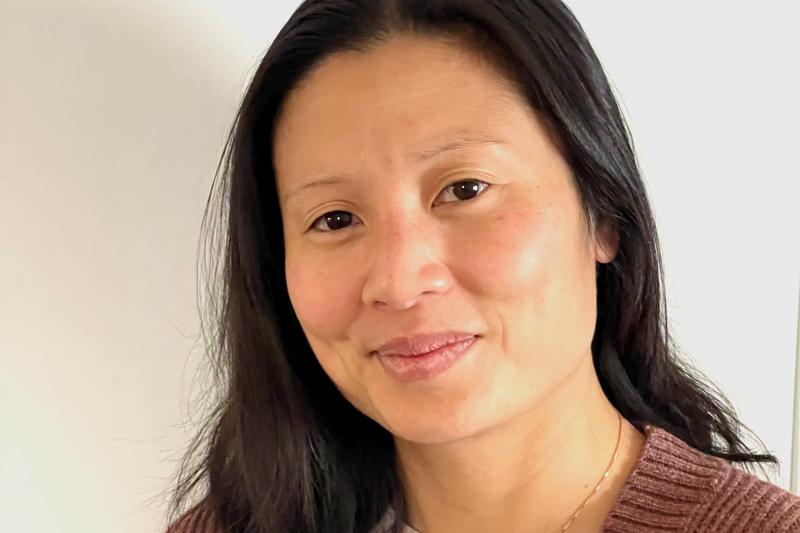-
About
- Departments & Offices
-
Academics
- Physician Assistant
- Special Master’s (MBS)
-
Admissions & Financial Aid
- Tuition & Fees
-
Student Experience
-
- Student Resources by Program
- Academic & Student Support
- Wellness & Wellbeing
- Student Life
- Events & Traditions
-
-
Research
- Research Labs & Centers
-
Local & Global Engagement
- Global Health Programs
- Community Engagement
Faculty Spotlight: Kim Dao
"I especially wanted to improve awareness of and access to physical therapy, as well as the quality of care patients receive."

Our DPT faculty are dedicated to make our students experience the best possible. Get to know our faculty members in the DPT Phoenix program—meet Kim Dao, assistant professor and board-certified clinical specialist in neurologic physical therapy.
What courses do you teach?
"I teach in the Doctor of Physical Therapy program based in Phoenix, Arizona. My teaching is mostly in the areas of clinical neuroscience, neurological practice management, and aging. I will also be assisting in courses on managing prosthetics, orthotics, and complex patients."
Why did you choose to become a Doctor of Physical Therapy?
"I initially pursued an undergraduate degree in bioengineering, specifically in tissue biomechanics. As I completed that degree, I discovered that the most obvious career opportunities were unlikely to quench my appetite for direct interaction with other people. I wanted to apply the principles of biomechanics in a clinical setting, working directly with people, rather than working in relative isolation in a wet lab. In searching for a different path, I remembered an injury I sustained when I was fourteen years old, an arm fracture resulting in a nerve injury. I recall not having much access to physical therapy, and the lengths to which my parents went to help me despite their busy schedules. As refugees from Vietnam, they were unaware of the role of rehabilitation in recovering from an injury like mine. This memory helped me decide to pursue physical therapy. I especially wanted to improve awareness of and access to physical therapy, as well as the quality of care patients receive.
After becoming a Doctor of Physical Therapy, I sought a certification in Neurological Physical Therapy. Over the past fifteen years, I have worked in acute care, inpatient rehabilitation, and outpatient settings. I was inspired by the improvements I saw in patients who had suffered strokes or spinal cord injuries, despite very serious injuries, and the constant challenges their condition and society posed for them. These individuals need more than the standard short-term rehabilitation after their injuries. They benefit from lifelong physical therapy and wellness promotion and it is clear that social health determinants play a significant role in their access to this level of support. Our health system is currently failing many such patients people, and I have always been motivated to make a difference in their lives."
What are your areas of research and why did you pick them?
"My research agenda continues to emerge. I am fascinated by the impact of concussions on function and integration of the vestibular, visual, and autonomic nervous systems. I am also interested in understanding how physical therapy is provided to - and perceived and accessed by - underserved populations, especially in terms of ethnicity and social class. I am also active in the scholarship of teaching and learning. How can we best prepare our students to improve health care equity in neurologic physical therapy? Are the outcome measures commonly used in education valid for underserved populations? Do our communication and education techniques meet their needs? How can we harness the power of technology to improve education?"
What accomplishments are you most proud of?
"Prior to joining Tufts University, I was the director of a full-time student-led physical therapy clinic that provided services for underserved populations in the Edmonton, Alberta region. In this role, I led successful efforts to increase the clinic’s impact and prominence, both within the University and in the community at large. I created opportunities for interdisciplinary treatment and participation in clinical research and developed innovative patient treatment programs such as group therapy for patients with total hip replacements, balance impairments, and Parkinson’s Disease. While also improving access to quality therapy services, I facilitated high-quality learning experiences for more than forty Canadian and international PT and PTA students each year. I’m proud of how successful the clinic was both in helping students hone their skills and in improving access to high-quality physical therapy for Edmonton residents."
Why did you choose to teach at Tufts?
"I have known Dr. Eric Hegedus, our program director, for many years, and was excited by the prospect of working with the amazing team I knew he would assemble. The accelerated, hybrid format of this DPT program also called out to my desire to make physical therapy education more accessible, particularly to students who are unable to relocate to attend a quality program. I am continually amazed at the resources available to faculty, staff, and students at Tufts. I know that I will have what I need to thrive as a Tufts faculty member, both in teaching and scholarship."
What is a piece of advice you would like to share with Tufts DPT students?
"Embrace challenges and take pride in your achievements. And when success isn’t immediate, persist, question, and find comfort in the fight for as long as it takes."
Department:
Rehabilitation Sciences